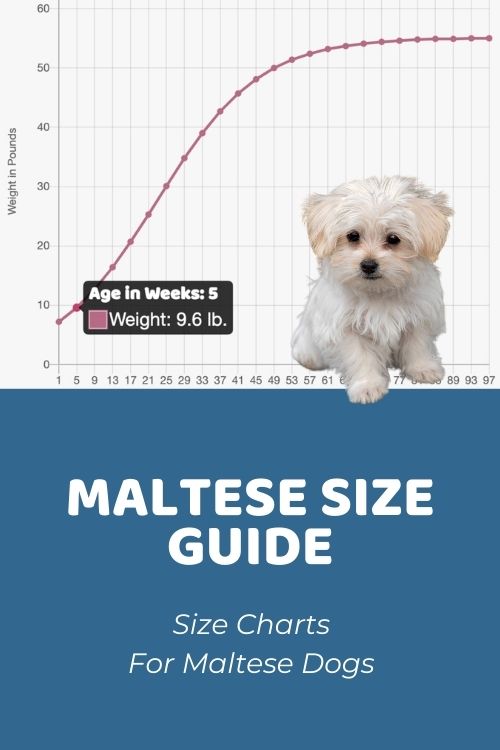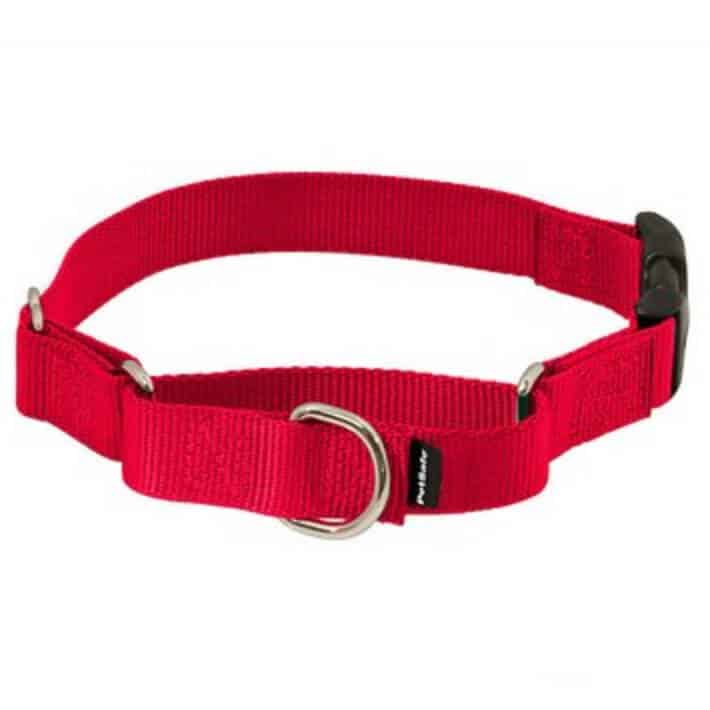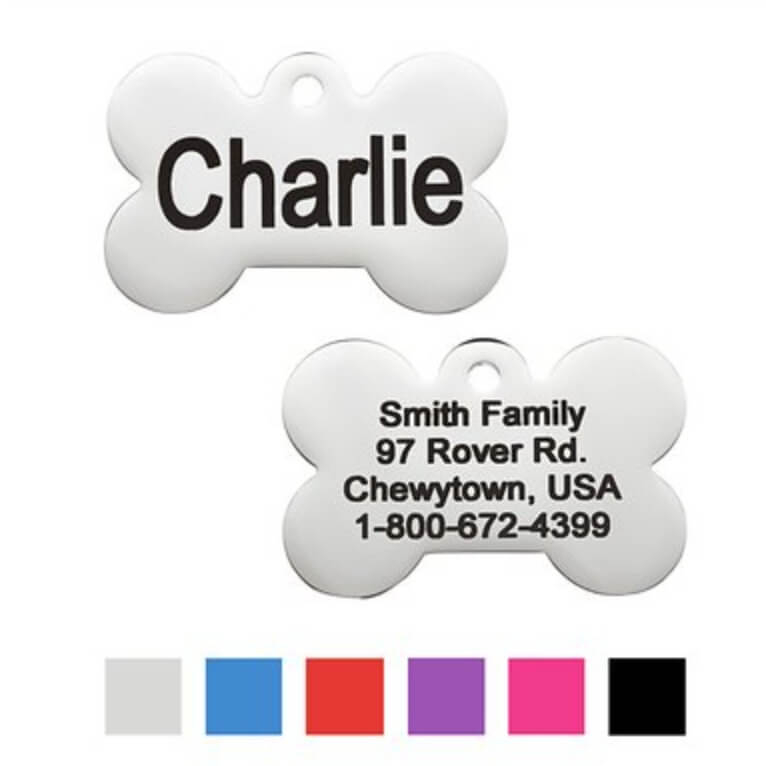
In this Maltese size guide, we’ll be learning all about the size and growth patterns of the Maltese breed from birth to adulthood. We’ve also created an interactive Maltese size chart and growth calculator that you can use to predict and track your Maltese size. Let’s dig in!

Our handy interactive puppy growth chart and calculator takes all the hard work out of predicting your puppy’s potential adult size. This helps you to know exactly what you are in for.
Psst! Check Out These Awesome Puppy Things!
Maltese Size Predictions: How Big Do Maltese Get?
Charming and regal, the Maltese is a pocket size dog in its truest meaning. With unforgettable looks and a great personality, it’s no wonder that the Maltese is so popular amongst dog owners. This pup is a playful little goofball that packs a lot of personality in a tiny package. Not to mention, their small size means that they can perfectly thrive in an apartment.
But how big do Maltese get? The Maltese is categorized as a toy-sized breed with a weight of up to 7 pounds. Typically, a full-grown Maltese can weigh anywhere between 3.5 to 7 pounds. Matching their lightweight build, they’re only 7 to 9 inches tall at the shoulder. Of course, some dogs can be a little bit larger as well. However, you probably won’t be able to find a Maltese weighing more than 11 pounds.
In addition, a Maltese’s adult size is determined by a variety of factors like their gender, diet, how much they exercise, or how big their parents are. For instance, if a breeder uses two larger Maltese dogs to produce a new litter, it’s likely that the puppies will fall on the larger end of the scale as well.

Similarly, over or underfeeding can also affect your Maltese’s full-grown size. If you’d like to learn more about how much you should feed your dog, check out this article. In addition, we recommend that you feed your Maltese puppy a formula specially designed for small breed puppies to support their growth and development.
Are There Different Sizes Of Maltese?
Like with many other breeds, there can be a slight difference between male and female Maltese dogs. Although males can run slightly larger than females, the difference is usually not that significant – a few inches in height at most.
If you’re after the Maltese teacup size, or Maltese toy size, we have to disappoint you. The Maltese is already a toy-sized breed. So, regardless of their estimated size, you will always end up with a tiny dog.

Additionally, please be aware of breeders who claim to specialize in teacup or toy Maltese sizes. More often than not, this is just a cheap marketing ploy to sell more puppies. Unfortunately, there are many irresponsible breeders who use unethical practices for breeding new litters. For instance, breeding runts or puppies with dwarfism gene to other unusually tiny Maltese dogs. As a result, the puppies can suffer from some serious health concerns that can greatly affect their life quality and lifespan.
Likewise, some breeders just use the word teacup or toy to attract more customers. Either way, before you adopt a puppy from a breeder, make sure to check out our guide on how to choose a responsible breeder. Even better, adopt from a shelter and save a dog’s life!
Maltese Size Charts & Growth Patterns – Month Wise
As all dogs follow similar growth patterns, we have a pretty clear idea about what to expect in terms of their growth and potential size. Dogs usually experience the most rapid growth spurts in their first 6 months and will finish growing between their first and second birthday. A useful rule of thumb is that smaller dogs tend to finish growing a lot faster than large or giant breed dogs. Therefore, we can expect a Maltese to finish growing by their first birthday, latest.
Additionally, this is why it’s particularly important that your Maltese puppy gets the correct nourishment he needs to grow that adorable little body into a healthy adult one. Check out these guides on best dog food for puppies here.
Let’s have a look at an average Maltese size chart by age:
| Age | 3 months | 6 months | 9 months | Adult |
| Weight | 4 pounds | 6 pounds | 7 pounds | 7 pounds |
| Height | 5 inches | 8 inches | 8 inches | 8 inches |
As we can see from the Maltese size chart above, these puppies usually reach half their adult weight already at 3 months old. From that point forward, you can expect your Maltese’s growth to gradually start to slow down. At 6 months old, a Maltese has likely reached its full height and most of their adult weight. However, we can expect them to gain a small amount of weight over the upcoming months. Generally, a Maltese will plateau at its full adult weight between 8 to 10 months old. But some larger pups can continue to gain a small amount of weight up until their first birthday.
If you’d like to guesstimate your Maltese’s full-grown size, be sure to check out our interactive Maltese size chart and growth calculator!
How Big Is A Full-Grown Maltese Dog?
A full-grown Maltese can weigh between 3.5 and 7 pounds and stand about 7 to 9 inches tall at the shoulder. However, it’s not uncommon for some pups to be slightly larger than the AKC breed standards state. An average Maltese can weigh even up to 11 pounds.

You can calculate their potential adult weight at 23 weeks by taking what they weigh at that age and multiplying it by two.
A different formula you could use is:
- Growth = current weight / current age in weeks
- Adult weight = Growth x 52 (number of weeks in one year)
So, for example, if your 12-week old pup weighs 18 pounds. You simply divide the current weight by their age in weeks and multiply the result with 52:
18/ 12 = 1.5
1.5 x 52= 78 pounds
78 pounds would be the expected weight of your adult-sized Maltese.
Is A Maltese A Small Or Medium Dog?
The American Kennel Club has categorized the Maltese in the Toy Group. This makes them one of the smallest dog breeds out there! Thanks to their small size, Maltese dogs can very comfortably live in an apartment. However, just like any other breeds, they do require daily exercise and walks to stay healthy and happy.
How Big Will My Maltese Be?
Unfortunately, there’s no way how we can predict with 100% accuracy a Maltese puppy’s size once fully-grown. Keep in mind that a variety of factors contribute to a Maltese’s full-grown size. These include their genetic makeup, gender, diet, and how much they exercise. If you’ve decided to adopt your puppy from a breeder instead of a shelter, you can ask the breeder about the size of the parents, and how big the puppies usually are in each litter.
Once you’ve adopted your Maltese puppy, use our interactive Maltese size chart and puppy weight calculator to predict their full-grown size, and track their growth from puppyhood to adult.
To conclude, the Maltese is a beautiful little dog with many amazing qualities that leave an unforgettable impression on anyone they encounter. They’re gentle, fun-loving, and affectionate dogs that quite literally can fit into your pocket. Understandably, it’s important to understand what growth stages a Maltese puppy experiences before they reach adulthood. We hope this article managed to answer all of your questions about the Maltese size and growth patterns.
Parents of Malteses: How big is your pup? Let us know in the comments!
Pin It!








